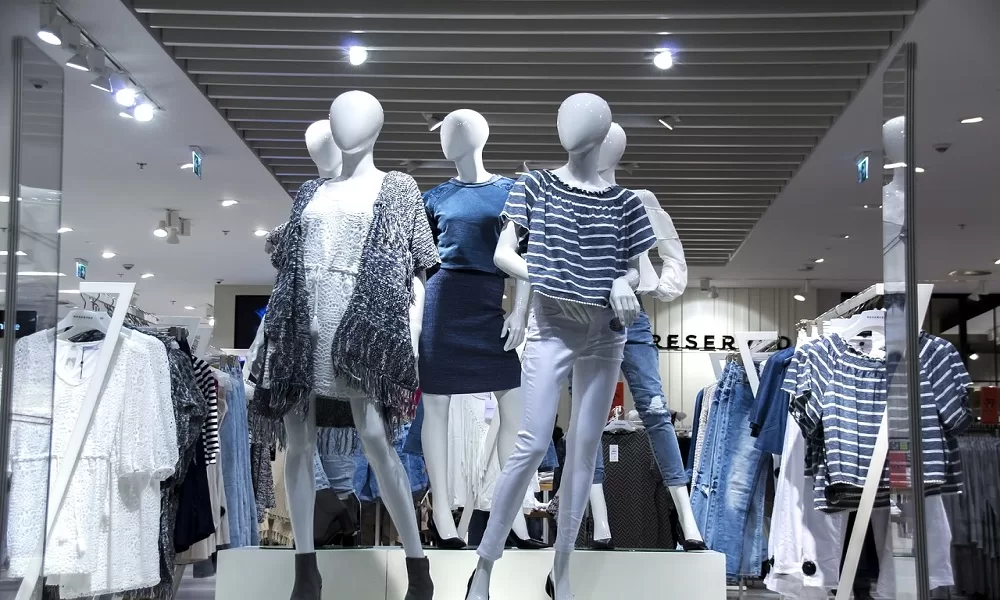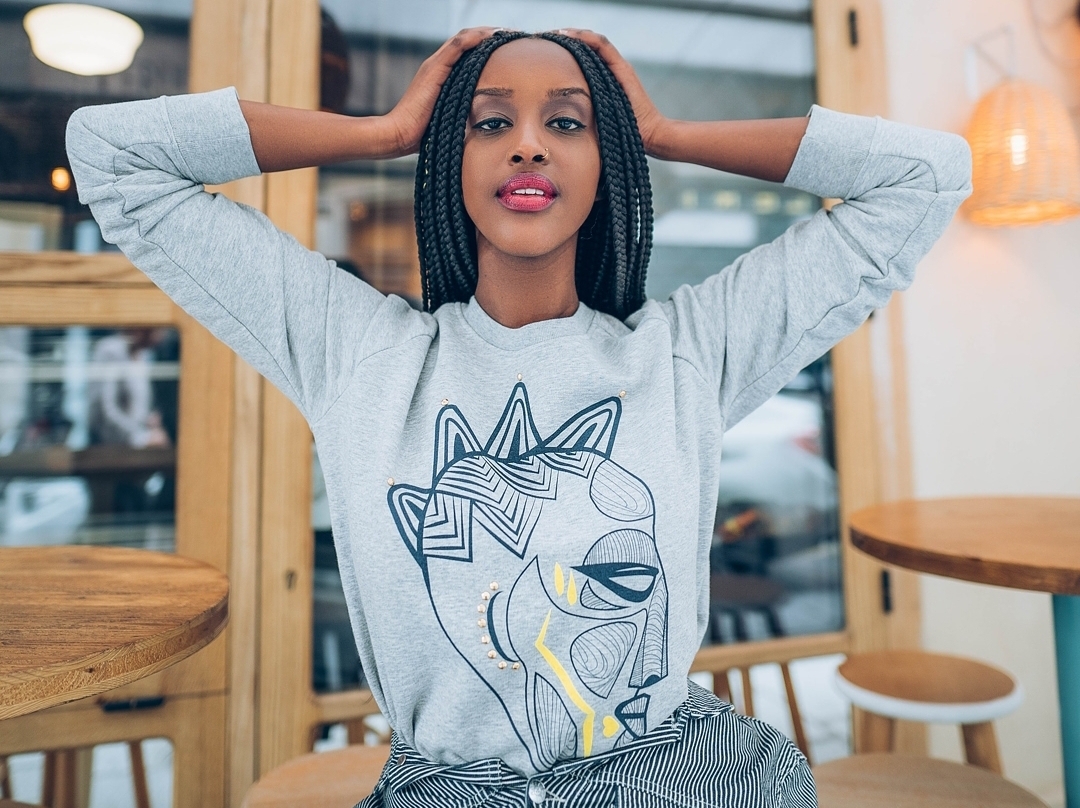Branded Clothing for Active Lifestyles: What Fabrics Support Performance?
Branded Clothing for Active Lifestyles: What Fabrics Support Performance?
Blog Article
The Significance of Sustainable Clothing: How It Affects the Environment and Your Wardrobe
Lasting garments is increasingly recognized for its critical role in lessening the environmental impact of the quick apparel industry. By concentrating on eco-friendly materials and honest production techniques, it addresses pressing ecological concerns. This change not just benefits the earth but also influences consumer options, bring about a much more thoughtful approach to wardrobe management. Recognizing these characteristics raises necessary inquiries about fashion's future and personal obligation in forming it.
The Environmental Footprint of Quick Style

Advantages of Lasting Products
Lasting materials use considerable benefits, particularly with eco-friendly fabric selections that minimize environmental damage. These materials likewise demonstrate sturdiness and long life, reducing the demand for frequent replacements. Because of this, they contribute to a more lasting apparel industry and advertise accountable customer actions.
Eco-Friendly Material Options
While the fashion business has actually long been related to quick fads and environmental damage, the increase of environment-friendly material choices provides a transformative possibility. Lasting products such as natural cotton, hemp, and Tencel have actually gotten popularity due to their reduced eco-friendly impact. These materials are often created without damaging chemicals and call for much less water, lowering their carbon footprint - Branded Clothing. Additionally, several green fabrics are naturally degradable, adding to a round economy by minimizing waste. Picking lasting materials not only sustains environmentally accountable techniques but also promotes much healthier communities. As customers come to be more aware of their purchasing power, the need for environment-friendly fabrics motivates brands to innovate and embrace even more lasting manufacturing methods, ultimately profiting the earth and future generations
Longevity and Longevity Advantages
Numerous customers are progressively acknowledging the toughness and longevity advantages of sustainable products in their clothing options. Unlike standard textiles, lasting materials such as organic cotton, hemp, and recycled polyester are engineered to hold up against damage, resulting in garments that last much longer. This minimized regularity of replacement not just conserves consumers money in time however additionally reduces waste created by fast style. On top of that, lasting clothes typically utilizes eco-friendly manufacturing techniques that improve textile stamina, adding to a reduction in the general carbon impact. By buying long lasting garments, customers can cultivate a more lasting closet while taking pleasure in top notch pieces that keep their visual and capability with time. Consequently, resilience and longevity stand as vital benefits of picking sustainable materials.
Reducing Waste Via Lasting Practices
Decreasing waste in the fashion business can be accomplished through cutting-edge practices such as upcycling and repurposing materials. Additionally, embracing minimal closet techniques encourages consumers to focus on top quality over quantity, eventually decreasing apparel usage. Together, these approaches contribute considerably to a much more sustainable clothing version.
Upcycling and Repurposing Products
Upcycling and repurposing materials have actually arised as cutting-edge methods in the fashion business, changing thrown out fabrics right into valuable new items. This method not only reduces waste however also motivates creative thinking and originality in clothing layout. By taking old garments and products, developers can develop one-of-a-kind items that mirror individual design while lowering the need for brand-new sources. Furthermore, upcycling usually calls for less power and water contrasted to traditional production processes, substantially reducing the environmental footprint of fashion. As consumers end up being more conscious of sustainability, the popularity of upcycled clothes continues to increase, advertising a circular economic situation. Eventually, these methods add to a much more lasting future, where style prioritizes environmental health and wellness over rapid production and consumption.

Minimalist Wardrobe Approaches
As individuals increasingly seek to minimize their ecological influence, taking on minimalist wardrobe techniques has actually acquired grip as an efficient strategy to sustainable fashion. These strategies stress quality over amount, encouraging consumers to curate a smaller collection of versatile, resilient garments. By concentrating on ageless items that can be blended and matched, people can reduce the regularity of purchases and eventually decrease waste.Additionally, minimalism advertises conscious usage, prompting buyers to mirror on the ethical and ecological effects of their options. This strategy not only promotes a more sustainable way of living yet likewise simplifies everyday decision-making relating to clothing. As individuals accept minimalist concepts, they add to a style culture that values sustainability and responsible consumerism, ultimately causing an extra eco-conscious society.
The Duty of Moral Labor in Lasting Style
While many customers are significantly familiar with the environmental effects of their apparel choices, the relevance of moral labor methods in lasting fashion can not be forgotten. Honest labor incorporates fair wages, risk-free working problems, and regard for workers' civil liberties, creating the foundation of accountable fashion production. Brands that prioritize moral labor not only uplift areas but likewise established a requirement for responsibility in the industry.Moreover, the integration of moral practices fosters transparency, enabling customers to make educated options concerning their purchases. This practice contrasts sharply with quick fashion's unscrupulous labor designs, which typically focus on profit over people. By sustaining companies devoted to moral labor, customers contribute to a system that values human dignity together with environmental sustainability. Moral labor is not simply an add-on; it is essential to the broader objective of lasting style, ensuring that the mission for eco-friendliness does not come at the expense of human legal rights.
The Influence of Sustainable Clothing on Carbon Emissions
Sustainable clothes has the possible to substantially minimize carbon emissions linked with the apparel industry. Typical garment manufacturing adds especially to greenhouse gas exhausts, mostly due to energy-intensive manufacturing processes and using non-renewable sources. On the other hand, lasting style concentrates on eco-friendly materials, such as organic cotton or recycled fibers, which usually call for much less energy to produce.Moreover, lasting brands tend i was reading this to embrace extra efficient production methods, lessening waste and lowering total discharges. By prioritizing sturdiness and ageless layout, sustainable garments encourages consumers to purchase less often, more minimizing the carbon impact connected with overconsumption.Additionally, many sustainable brand names are devoted to openness in their supply chains, allowing customers to make educated choices that line up with their worths. Ultimately, changing in the direction of lasting garments can cause a significant reduction in carbon discharges, contributing to a much healthier earth and a much more sustainable future for the apparel industry.
Sustaining Regional Economic Situations With Lasting Selections
The shift towards sustainable apparel not only addresses ecological worries yet likewise significantly benefits regional economies. By selecting sustainable style, consumers often support small organizations and regional craftsmens, improving area durability. These business normally operate a smaller sized range, prioritizing workmanship and honest practices over mass production.Investing in locally made sustainable clothes promotes work creation and stimulates economic growth within areas. As consumers end up being extra knowledgeable about the ecological impact of their purchases, they progressively seek products that mirror their values. This demand encourages local producers to embrace sustainable methods, contributing to a circular economy.Moreover, sustaining regional services lowers transportation discharges, straightening with eco-conscious customer habits. The interconnectedness of lasting clothes and local economic climates highlights the necessary role that private options play in advertising both economic and ecological wellness. By promoting these neighborhood connections, areas can grow while also functioning towards a more sustainable future.
Changing Your Closet: Tips for a Sustainable Closet
As people seek to minimize their ecological influence, changing a closet right into a sustainable wardrobe ends up being an important action. One efficient approach is to assess existing clothing, keeping only products that are worn consistently which align with sustainability objectives. Prioritizing quality over quantity is essential; spending in resilient items from eco-friendly brands can substantially reduce waste.Additionally, including used products can breathe new life into a closet while decreasing ecological damage. Organizing clothes swaps with good friends or contributing unused items can better promote sustainability.When buying, people should seek products that are organic, recycled, or naturally degradable, and stay clear of quick style merchants - Branded Clothing. Finally, practicing conscious click here for info intake by attentively taking into consideration each acquisition can add to a much more sustainable way of life. By carrying out these pointers, one can produce a wardrobe that reflects individual style while sustaining environmental stewardship
Often Asked Questions
Just How Can I Recognize Sustainable Clothing Brands?
To identify lasting garments brands, one should investigate materials utilized, look for certifications like Fair Profession, and examine the brand's openness concerning their production procedures, labor techniques, and ecological effect, ensuring ethical and eco-friendly methods are focused on.
What Are the Costs Associated With Lasting Style?
The costs connected with sustainable style can vary significantly. Greater manufacturing expenditures, moral sourcing, and environment-friendly products typically result in increased market prices, which might prevent some customers while interesting environmentally mindful buyers.
Can Lasting Clothing Be Stylish and stylish?
Lasting clothing can certainly be trendy and trendy. Developers increasingly focus on ingenious products and honest production approaches, verifying that style and sustainability can exist together. Consumers currently have diverse choices that blend appearances with ecological awareness.
Just How Does Laundering Garments Affect Their Sustainability?
Washing clothing greatly effects sustainability by consuming water and power, contributing to contamination, and triggering microplastic release. Regular washing can degrade textiles, reducing their life-span and boosting the requirement for replacements, inevitably intensifying ecological worries.
What Is the Life Expectancy of Lasting Clothing Compared to Fast Style?
The life-span of sustainable clothes usually exceeds that of fast fashion items, frequently lasting numerous years because of quality materials and craftsmanship. In comparison, fast fashion garments might weaken swiftly, requiring more frequent substitutes. Sustainable clothes is increasingly acknowledged for its crucial duty in decreasing the environmental effect of the quick style market. While lots of customers are progressively aware of the ecological effects of their clothing selections, the relevance of ethical labor practices in sustainable style can not be forgotten. Branded Clothing. Lasting apparel has the possible to considerably lower carbon emissions connected with the fashion industry. In comparison, lasting fashion focuses on environment-friendly products, such as natural cotton or click now recycled fibers, which frequently require less energy to produce.Moreover, lasting brand names have a tendency to take on a lot more reliable manufacturing methods, lessening waste and reducing overall discharges. By focusing on longevity and classic design, sustainable clothes motivates customers to purchase much less often, more reducing the carbon footprint associated with overconsumption.Additionally, numerous sustainable brand names are devoted to transparency in their supply chains, enabling consumers to make enlightened selections that align with their values
Report this page